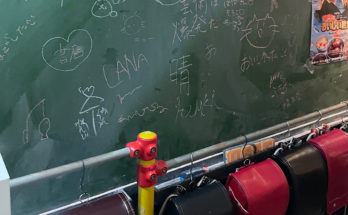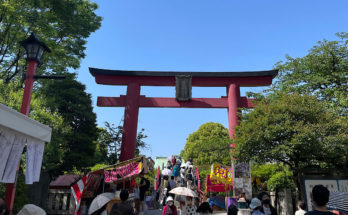I assume that you probably know all about matcha (Ma-cha 抹茶), a powdery grated green tea. You might also have tried some matcha-flavored sweets. Now, they are very popular throughout the world. However, there are so many other kinds of Japanese tea, and each has their own value and benefits. In fact, although ma-cha is quite popular, you might be surprised to learn that Japanese leaf tea is more common in our daily lives. In this post, I’ll introduce many varieties of Japanese leaf tea, so that you may be inspired to try some of them and pick your favorites. You may recognize some of them, too! Let’s enjoy this exploration of delicious Japanese-style tea.
Difference between Japanese tea and black tea.
Some people would be surprised to know that English black tea and Japanese green tea are made of the same kinds of leaves. So, what is the difference between them? It’s the production method: fermentation. Japanese tea is non-fermented, while the leaves for black tea are full-fermented. Leaves for Japanese tea are steamed soon after they are picked not to be fermented.
Another special mention of Japanese tea is that it only uses young leaves compared to black tea that uses any leaves, including old ones. The newest leaves in the season for Japanese tea become most valuable in Japan. We call that tea “Shin-cha(新茶),” which means newly leaves tea. For those reasons, they are fresh and delicate, so it is supposed to be good with 40-80℃ hot water so as not to heat them too much. With the lower temperature water, the tea tastes sweeter and well smelled. The higher temperature water makes the tea bitter.
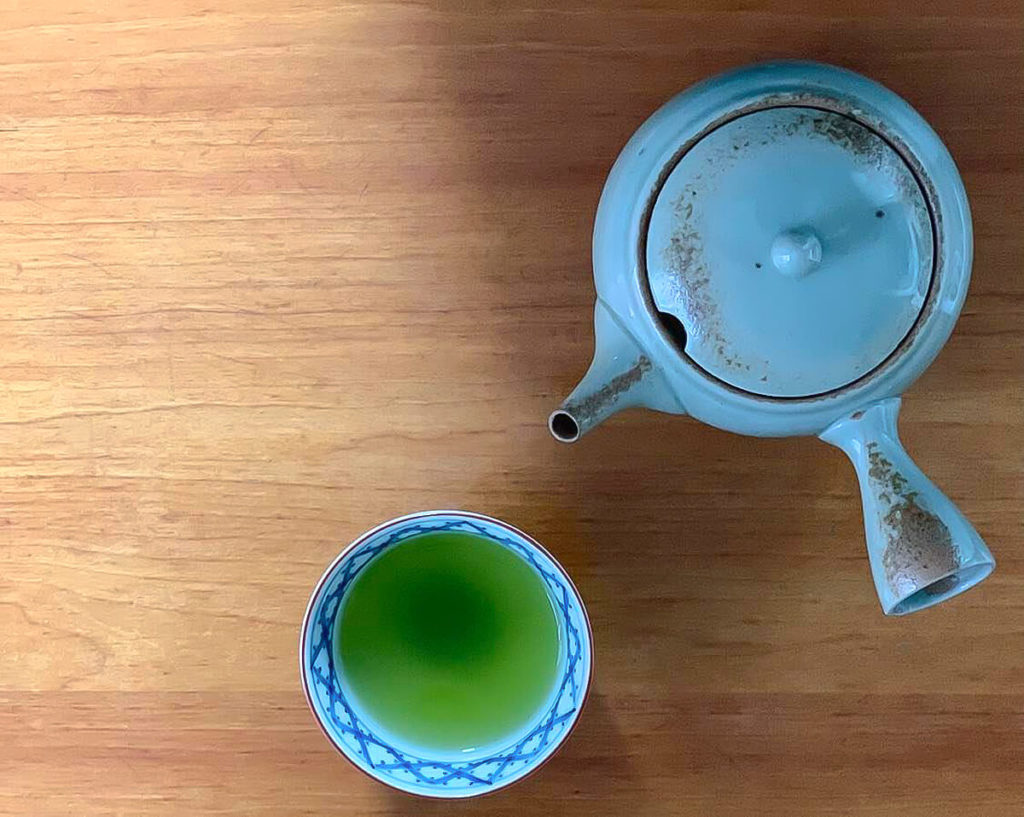
Kinds of Japanese tea.
Japanese tea can be divided into three categories. The first includes Gyokuro (玉露), which is as known as the most prestigious tea in Japan. That leaves are covered from sunlight after coming into the bud before they are going to be picked. This is the way to get rid of the bitterness the leaves have and become taste sweet and smell good, and the watercolor is vivid bluish-green.
The second includes Sen-cha (煎茶), which is the most popular tea in Japan and Fukamushi-cha (深蒸し茶), which is made through a process similar to that of Sen-cha. The leaves grow uncovered and get a lot of sunlight. After they are picked, they are made dry by kneading while steaming.
The third includes all the rest of various kinds like roasted tea, the popular powdery matcha, and so on.
What is “Fukamushi”?
I’ll tell you my favorite is Fukamushi-cha (深蒸し茶). What is “Fukamushi”? It means “long steaming” in Japanese. The leaves are steamed longer than popular tea; Sen-cha. The taste is sweeter but contains some mild fresh bitterness. Since the steaming process takes longer, the leaves become smaller flakes, and they flow out into the hot water when you pour it. The watercolor becomes darker green which is the color of the leaves themselves.
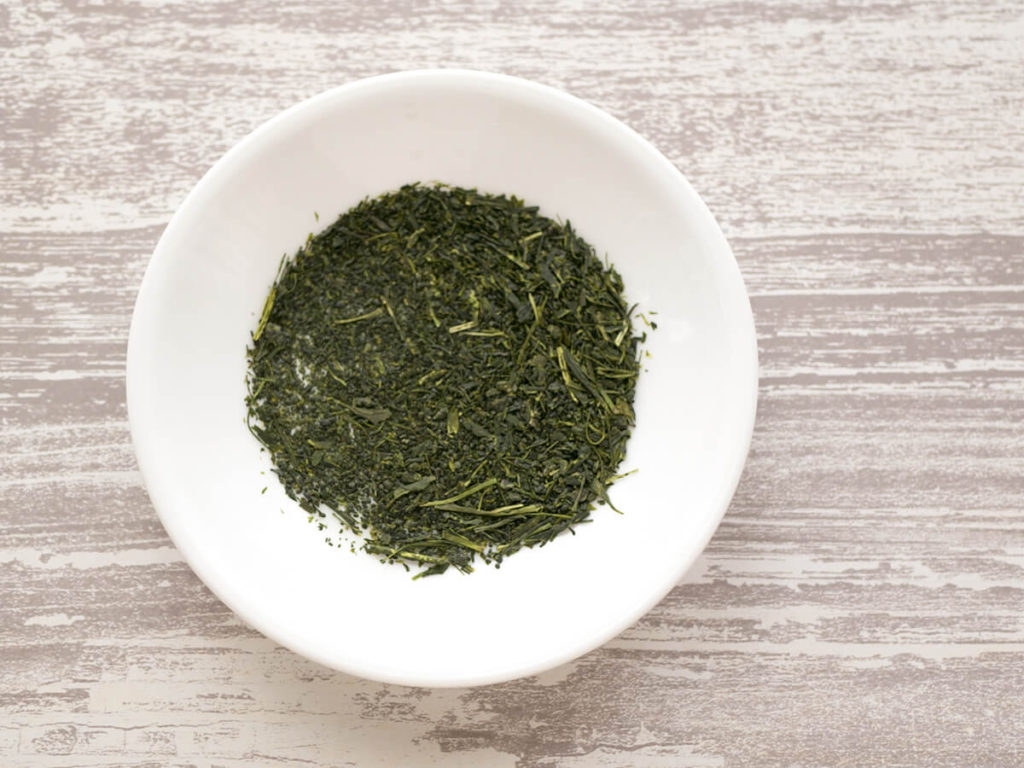
I would like you to enjoy the aroma of the tea before drinking it. Try a wonderful therapy of fresh green leaves. Wrap your cup with two hands, close your eyes, and bring your nose closer. You’ll feel like you get good healing. You can relax quickly and enjoy unwinding moments.
Japanese tea has a lot of awesome nutritional benefits that help you maintain your health. Taking small flakes of tea in the water means you can get the benefits more! I know some people are aware of caffeine but don’t worry! It also contains the ingredients that restrain the bad effect of caffeine and help you relax. You can be refreshed and get a clear mind by caffeine, and at the same time, you can relax. It is amazing! This is a good fit drink with your me-time after dinner. You sit back but still want to read a book with a clear mind at night.
I love this mild bitterness and sweet taste. Besides, they are inexpensive compared to Gyokuro and have many positive effects as well. I would say it is a well-balanced tea!
How to make Fukamushi tea with my own recipe:
(Please note that certain tea specialists might consider this an improper way to prepare tea, but this is how I love to prepare my own!)
- First, buy Fukamushi-cha. For a reasonable price and good quality, you should consider paying around ¥800 per 100g, or perhaps a little more. You can find this tea at both special tea stores and big local grocery stores in Japan.
- Use a special teapot for Fukamushi-cha. Mine is for 360ml hot water.
- Put about 7-8g of the tea in a pot for about 2cups, 2-3 porings. Even if you are alone and want to drink just a single cup, I still recommend using at least 4g. Your flavor will be much better!
- Put soft water in a kettle. Once it boils, add some cold soft water to lower the temperature. My favorite is when it reaches 70-80℃. When the water is at a high temperature, the taste becomes too bitter. For best results, please don’t use hard water. Using hard water will change the taste of the tea.
- Put the water in the pot and let the leaves steep for around 30 seconds, or a bit longer, if you’d like. If you let them steep for longer than 1 minute, the tea loses its good flavor and just becomes bitter.
- Pour the tea into the cups. If you share the tea with others, remember to pour the tea little by little into each cup and continuously swirl the pot gently around to keep mixing the tea flakes. Continue until all of the tea comes out of the pot. It’s best not to leave the water in the pot for another cup. I usually put the hot water in my 360ml pot for two cups for my husband and me at the same time. After we drink them, we pour another two cups of tea for us.
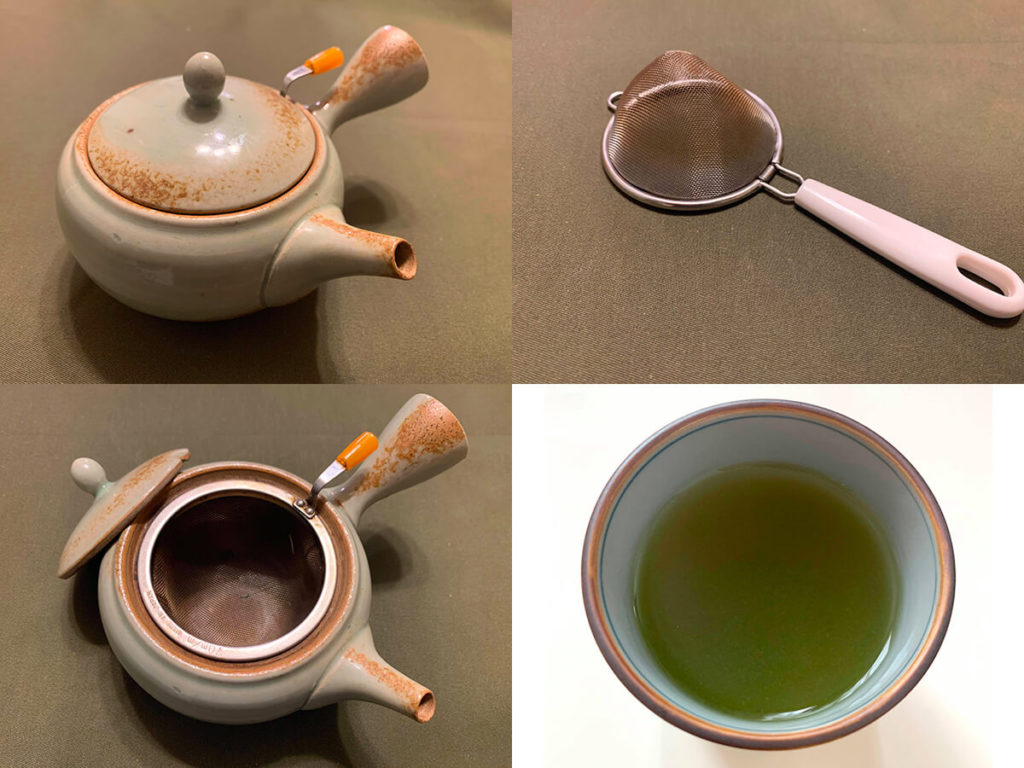
You can also use a fine-meshed tea strainer too. In that case, pour the hot water very slowly and move the strainer little by little to sprinkle the water all over the tea leaves.
Born in Tokyo and currently living in Yokohama. A first aid trainer for both instructors and laypersons. Advanced Taichi player for more than 25 years. A cat lover. Mott: Only the person who tries to get more than two things can get more than two.


